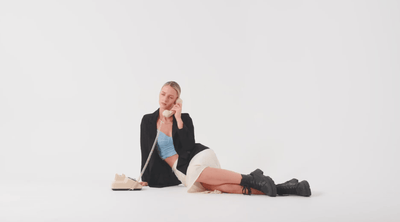Imagine the vast, silent expanse of space—where the only thing you might not expect is a scent. Is it possible to smell anything in the vacuum of space? Join us as we explore the science behind making scents make sense in the cosmos.
Space: A Vacuum with No Smell
Space is a near-perfect vacuum, lacking the air needed for smell. Our sense of smell relies on the presence of airborne molecules, which are absent in space. It's like trying to detect a scent in a vacuum-sealed environment—impossible without air.
Astronauts’ Sensory Experiences
Astronauts have reported experiencing space-related smells once they return to their spacecraft. These sensory experiences vary widely. Some astronauts, like those involved with the Apollo moon landings, report scents like raspberries, metal, seared steak, and gunpowder after their spacewalks. Some claim that they smell hints of rum on their spacesuits. Others have encountered more unusual and unpleasant odors. For example, the Rosetta spacecraft once detected compounds responsible for the smell of rotten eggs, cat urine, and bitter almonds coming from the surface of a comet.
Why Do Astronauts Smell These Scents?
Particles from space adhere to astronauts’ suits and equipment, carrying scents back inside. These particles might be remnants of space dust, cosmic rays, or other extraterrestrial materials. When astronauts re-enter their spacecraft, the particles mix with the air, creating unique and sometimes unexpected odors.
These particles might react with the air inside the spacecraft, leading to the distinct smells reported by astronauts. The interaction of these particles with oxygen and other elements in the spacecraft can produce a variety of chemical reactions, resulting in odors that range from metallic and smoky to more complex and pungent.
Reconstructing the Smells of Space
In 2008, NASA commissioned Steven Pearce, a chemist, to reconstruct the smells of space for astronauts in training. This was part of an effort to help astronauts distinguish between the smell of PAHs (polycyclic aromatic hydrocarbons) and dangerous chemical leaks that could potentially be on board the space station.
Pearce’s work involved analyzing the descriptions provided by astronauts and recreating those scents in a controlled environment. His team synthesized the metallic, burnt, and smoky smells using a combination of chemicals that matched the astronauts’ reports. This training tool helps astronauts become familiar with the odors they might encounter after spacewalks, enhancing their safety.
We May Never Know Exactly What Space Smells Like
Despite the fascinating accounts from astronauts and scientific reconstructions, the exact scent of space remains a mystery. Each spacewalk and mission contributes to our understanding, but the true aroma of the cosmos is still largely unknown. However, the descriptions provided—ranging from raspberries and rum to seared steak and gunpowder—offer a glimpse into this enigmatic sensory experience.
At Lèlior, we are inspired by these extraordinary accounts and the infinite possibilities they represent. Just as the smell of space remains partially unknown and surprising, we are inspired by the unknown and unexpected in our fragrance creation process. Our fragrances blend seemingly disparate elements to create harmonies that delight and surprise. Our commitment to innovation ensures that each scent offers a new and exciting experience, making scents make sense in ways you’ve never imagined.
Each Lèlior fragrance is a testament to the beauty of exploration and discovery, capturing the essence of blending the known with the mysterious. Just as space challenges our senses, our fragrance oils, essential oils, scent diffusers, and room sprays challenge conventional boundaries to create something truly extraordinary. So, while the cosmos may hold its secrets, we're dedicated to unveiling new worlds for you to explore.







